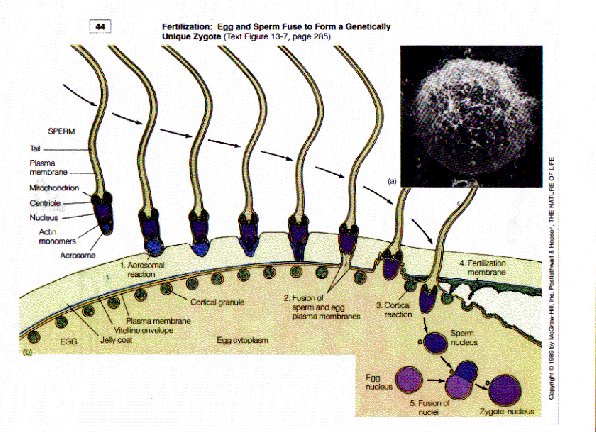Unit 4 Review #1 Reproduction
Human Life Cycle
Meiosis---eggs and sperm
Fetal Development and Birth
The human life cycle starts at birth when we are first introduced to this world. From there we grow into young adults where puberty sets in and then into adulthood. Boys and girls both go through puberty with girls starting between ages 11-13 and boys between 14-16. During this stage is when the reproductive system goes through many changes and is then capable of producing offspring.
Meiosis
There is two types of cell division that takes place in the human body mitosis and meiosis. Mitosis discussed before it a cell making an exact copy of its self. A cell has 46 chromosomes and after cell division the copies also have 46 chromosomes. This type of cell division takes place during tissue repair or growth. While meiosis cell division takes place during the production of sperm and eggs. During this process the cell starts with 46 chromosomes (called a diploid 2n) like before but after division the offspring or copies only have 23 chromosomes each (called haploid n). Meiosis goes through two successive divisions meiosis 1 and meiosis 2. When the sperm with 23 chromosomes meets with the egg also having 23 chromosomes the zygote will have 46 chromosomes and will grow into a baby. If meiosis did not occur then the offspring or baby would have too many chromosomes and the cells would not be able to function properly. So because of this process you have equal traits from both parents. 
The sperm produced from male and the eggs produced by females are very important to the reproduction of children. During puberty males start to produce sperm in the testes, sperm has three distinct parts; a head, middle piece, and tail. The head is covered in enzymes needed to penetrate the egg while the middle provides energy for the tail made of flagellum to propel its self threw the cervix to an egg. The only function of sperm is too carry the 23 chromosomes to the egg.
(picture of sperm)

The ovaries of women produce eggs along with hormones. A women usually ovulates once a month which is when the ovary releases an egg to be fertilized. If the egg is not fertilized then menstruation takes place. If the egg is fertilized the it will attach it’s self to the lining of the uterus.
(picture showing sperm entering egg to be fertilized)

Fetal Development
Once the egg is fertilized and attached to the uterus it is considered an embryo and starts to grow. Many cell divisions take place to create your child. An average pregnancy last 40 weeks and is calculated starting from the first day of your last menstrual cycle. Which means by the time you notice that your pregnant by missing a period you are already around 3 weeks pregnant. Pregnancy is broken down into three main stages of development pre-embryonic, embryonic, and fetal development. Pre-embryonic is considered the first week of pregnancy when ovulation occurs in the mother and fertilization has occurred starting cell division of the zygote. The next stage embryonic development is the second week through the second month. There are many things that take place to both mother a child during this time. A few of the events the baby goes through are as follows;
2nd week: implantation occurs, the embryo has tissue, and the placenta is forming
3rd week: the nervous system starts to develop and blood vessels are present
4th week: limb buds form, heart is noticeable and beating, and the nervous system is prominent
5th week: head is fairly large while the nose, eyes and ears are now noticeable
6th week: the fingers and toes are now present and the skeleton is cartilaginous
8th week: all systems are under development and bone is replacing cartilage
The last stage of pregnancy is fetal development which is the third month through the ninth month. Below are some of the developments of the baby during fetal development. During the;
3rd month: the gender may be determined with ultrasound and fingernail are now present.
4th month: skeleton is visible, and hair starts growing
5th month: Heartbeat can be heard and a protective coating surrounds the baby called vernix caseosa
6th month: fat has developed, the ears can now hear sound, and the baby now has eyelids and eyebrows.
7th month: eyes are now open and facial features now resemble what your baby is going to look like
8th month: lungs and digestive tract are almost complete and baby eyes can now distinguish light and dark
Finally the in the 9th month all the body hair is gone and the fetus is ready for birth.
(Below a new born)

Work Cited:
http://parenting.ivillage.com/pregnancy/0,,nc26,00.html
http://faculty.uca.edu/~johnc/human%20life%20cycle.bmp (meiosis)
http://www.thetilleychannel.com/sarah/month01/princess.jpg (newborn)
http://www.lions.odu.edu/~knesius/miniunits/gamma/sperm.jpg (sperm)
http://www.siue.edu/~cbwilso/203con4.jpg(fertilization)

1 comment:
HI ,
Iam VARMA from India. Iam very much impressed by your blog. Iam a postgraduate in Zoology i'm very happy to visit your blog and gain some knowledge here.
If possible send your posting to my ID : varmabv29@gmail.com
Thank you very much .....
Post a Comment